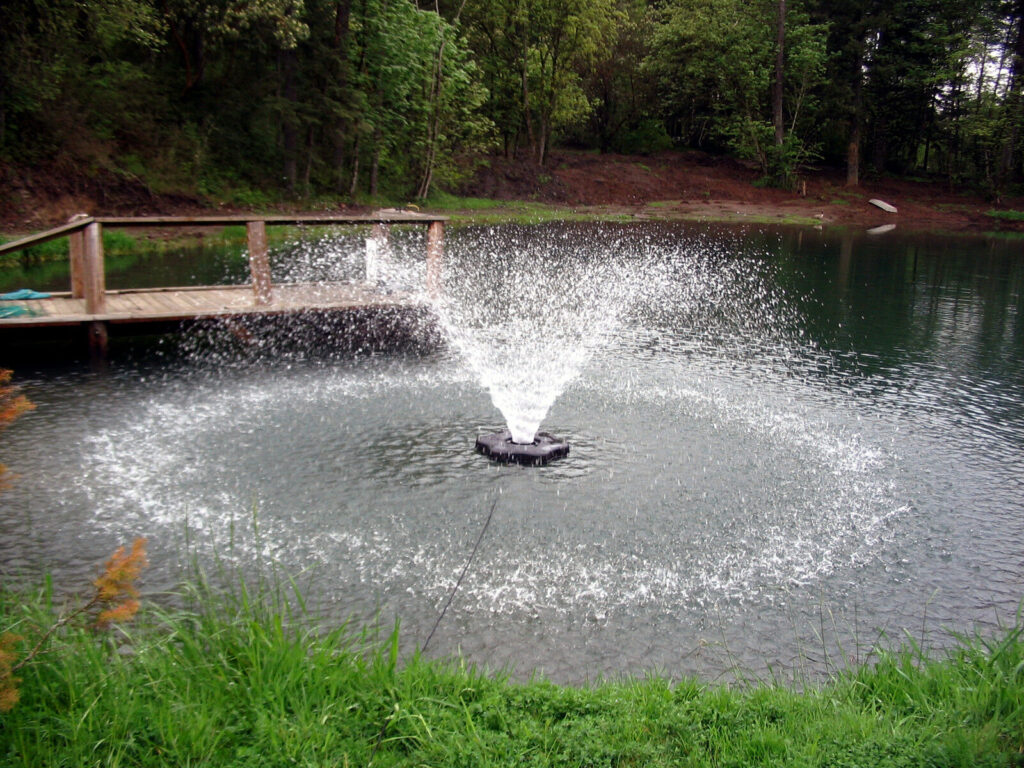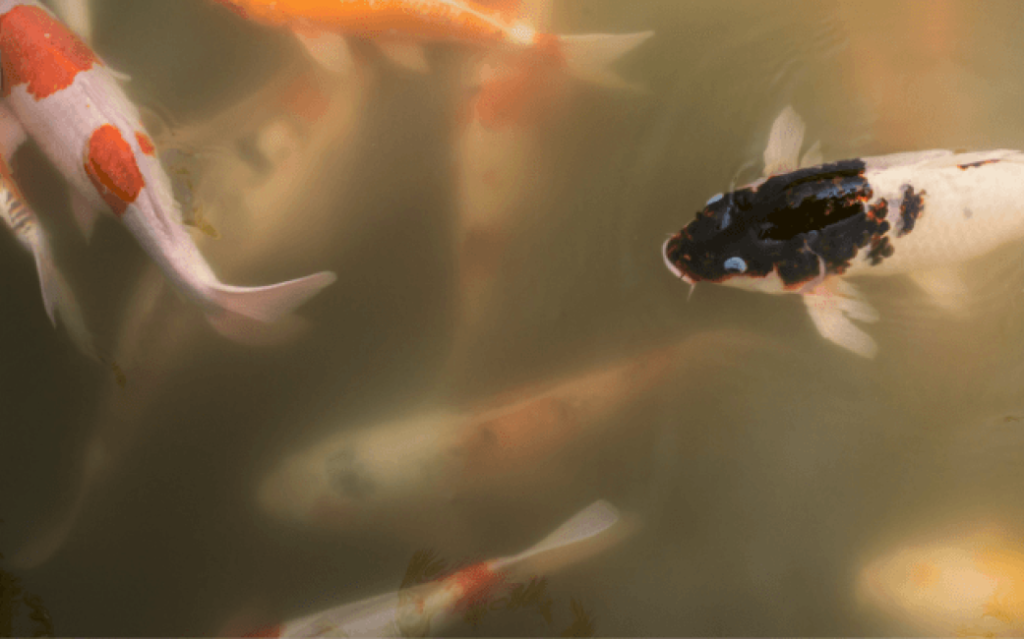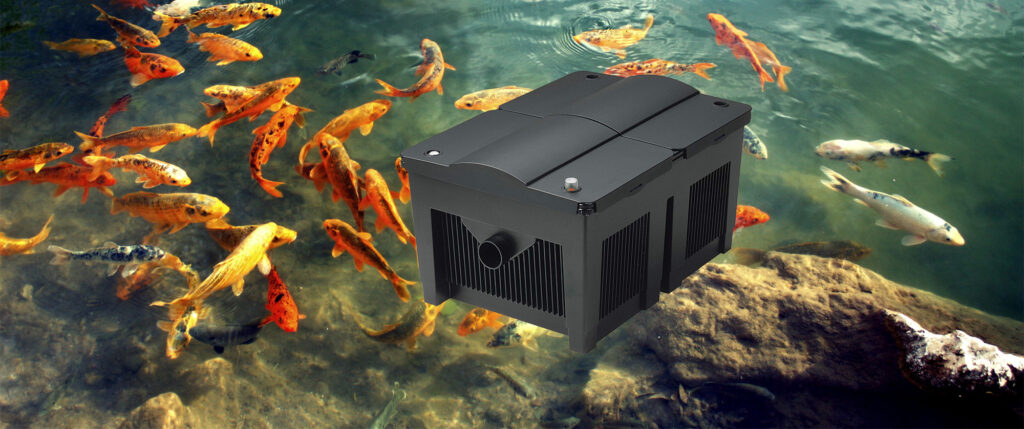
There’s something incredibly tranquil about a beautiful pond full of wildlife and gurgling water. However, murky water in your pond quickly takes all the magic away, and even the wild animals in it soon start to disappear unless you take action to keep the pond clear.
For those who know how to keep pond water clear without a filter, it is one of the best ways to keep running costs minimal and preserve the natural balance of life in your pond. There are many ways to ensure algae control and keep harmful toxins and bacteria away from your pond water without relying too heavily on artificial devices.
However, you have to understand that it is not easy to keep your pond water clean and clear, especially if you have fish. Algae, bacteria, and other kinds of waste quickly take over without regular maintenance.
If you’re willing to invest some work and time in your pond, there are some truly ingenious ways you can keep your pond naturally clear and breathtaking.
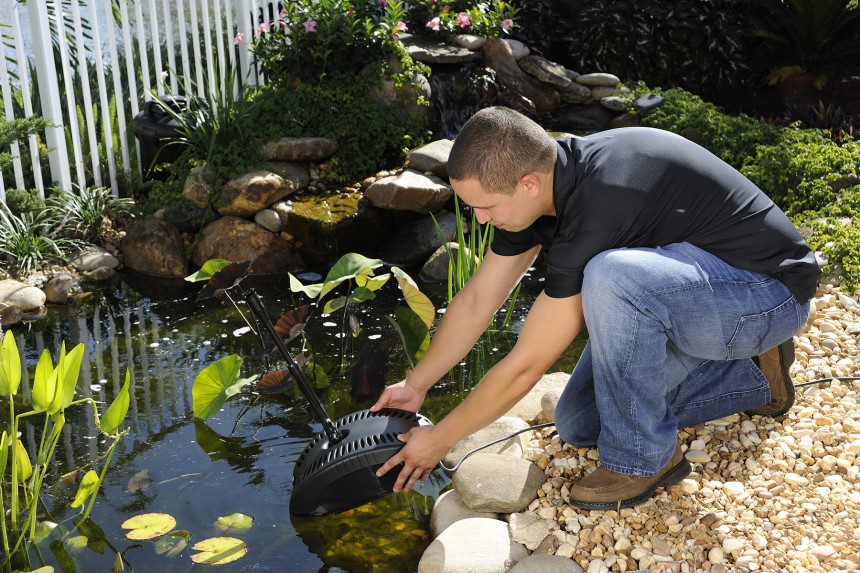
Unlike what most people believe, the primary function of a pond filter isn’t to remove suspended particles from the water. Instead, it encourages the growth of beneficial bacteria, which breaks down organic toxins and matter such as excess fish food, fish excreta, dead organic matter, and more.
These bacteria further break down nitrogen compounds such as ammonia, which is a natural fertilizer for water plants. The ultimate goal of using a pond filter is to balance out the nitrogen cycle and make the water clean and clear.
The bacteria in the pond filter’s media act just like a water treatment plant. By breaking down natural and organic toxins, it keeps the water clear and free of algae.
Thus, if you’re going to have fish in your pond, a pond filter is necessary to keep the water healthy. Some of the best pond fish such as goldfish and koi are quite sensitive to things like toxic compounds in the water or insufficient oxygen.
If you don’t have any fish, you might still want to have a filtration system in place to prevent the water from getting murky and cloudy.
Most pond filters also come with an inbuilt UV clarifier. The clarifier is a unit that passes powerful ultraviolet light through the water passing through the filter and kills mono-celled algae and similar organic compounds.
The dead algae cells clump together and can be filtered mechanically from the water, clearing it up in just a few hours. Top-notch
pond water quality
Trusted Source
Water Quality Concerns for Ponds
This is a summary of some common water quality parameters that may cause problems in ponds and how to detect and treat them.
extension.psu.edu
is more than about algae and suspended matter, so maintaining clear pond water without a filter will need to be through a more comprehensive solution than just natural filtration.
Despite their many advantages, pond filters are not necessarily the best solution for a clear and healthy pond. For one, they kill a lot of the beneficial bacteria used to break up toxins and cause an imbalance in the whole ecosystem. They are also expensive to run, requiring electric pumps running constantly and frequent maintenance.
The alternative is to run a naturally balanced pond. Since the threat to your pond comes from algae and organic toxins in the water, you can introduce natural solutions for cleaning up and clearing your pond sufficiently to remove the need for an artificial filter. Here are 10 innovative ways to maintain your pond without a filter.
Fish are the biggest problem in your pond when it comes to cloudy and unsanitary water. For one, they poop too much. Fish like koi and goldfish excrete a lot of waste which quickly becomes toxic due to the presence of ammonia.
This problem is compounded by the fact that many people like to cram as many fish as they can into tiny ponds. When fish excrement falls to the bottom of the pond, it mucks up the water and becomes prime algae fertilizer unless it is quickly broken down. Once algae blooms, it sucks out all oxygen from the water and kills your pond. Plus, it also makes the water smell and look terrible.
With less fish in your pond, less waste will be produced which makes it easier to manage the water in your pond. Algae only grows in ponds which are high in nutrients and sunlight, so less waste will discourage its growth.
With that in mind, it makes sense to determine what is the right number of fish for your pond. Experts recommend that you should not exceed 1-2 koi for every 200 gallons of pond water, or 2-3 goldfish. Remember that the fish will grow and reproduce, so you need to plan for that as well.
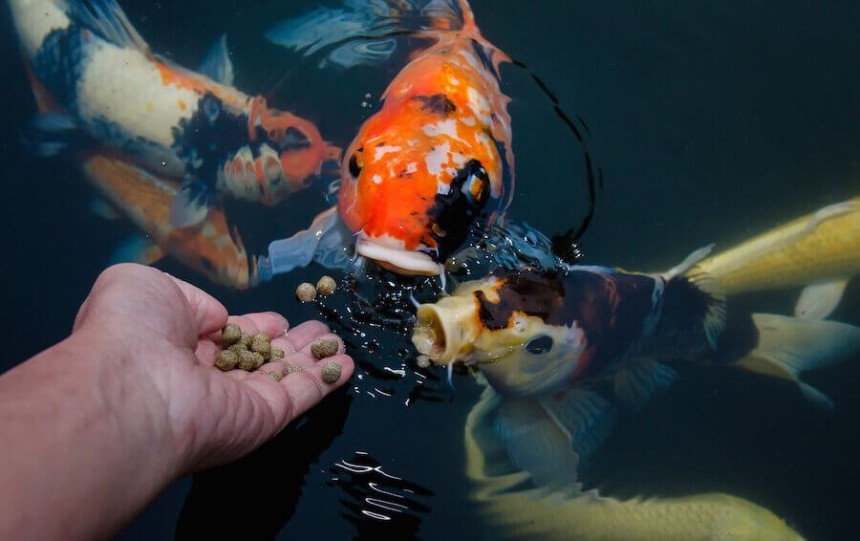
Fish like goldfish and koi are perfectly capable of finding their own food. They eat tiny larvae and plants which grow naturally in any pond, whether small or large. If you have more fish or they have grown bigger, you can stick to feeding them once a day depending on species. In winter, you need to feed them even less.
It’s easy to succumb to the urge to shower your fish with food, since that’s the only way to interact with them. Don’t do it, however, even when they make you think that they are famished and starving. Here are some more convincing reasons not to overfeed your fish:
If your fish pond is becoming cloudy due to overfeeding, pausing their feeding for 2-3 days can usually clear that up. Remember to create and stick to a feeding schedule Trusted Source Good nutrition in animal production systems is essential to economical production of a healthy, high-quality product. In fish farming (aquaculture), nutrition is critical because feed typically represents approximately 50 percent of the variable production cost. fisheries.tamu.edu and always feed only the proper amount. All fish feed should be cleared up within minutes of feeding when done properly.
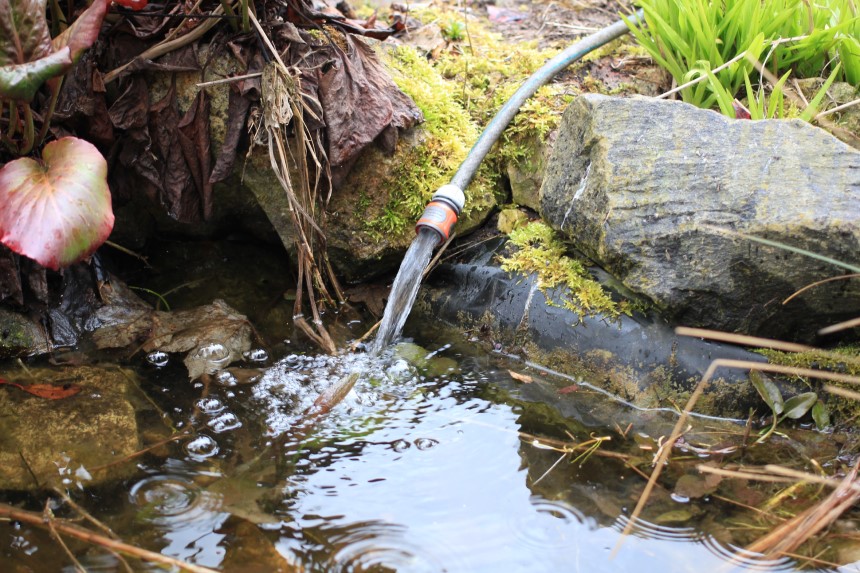
When running a pond without a filter, it is important to carry out these water quality tests often. If the quality is bad, you can increase the amount of water swapped to a maximum of 50%. The idea is to maintain the delicate ecological balance in the pond ecosystem while introducing fresh water.
To change the water in the pond, you can:
The reason you should keep changing your pond water is because as some of it evaporates, it leaves behind pollutants such as organic matter, salts, fish waste, soil, and more. Simply recharging the water lost causes these pollutants to build up in the pond, slowly poisoning the water. However, changing the water keeps it fresh and clean.
The accumulation of organic matter and sediment at the bottom of your pond is what we know as muck or sludge. It also contains dead fish, algae, mold, dead leaves, and other unattractive matter.
Normally, pond sludge poses no threat to your fish. If it builds up, however, it will cloud the water and cause it to become mucky and smelly. Decaying organic matter releases gases such as hydrogen sulfide while reducing the oxygen levels in the pond.
Without filtration, pond sludge becomes more common, but there are several solutions that work great for clearing it all up.
Pond sludge remover is usually a specific blend of bacteria that targets the sludge at the bottom of the pond and digests it to turn it into nutrients. One of the most effective sludge removers is the PondCare API Pond-Zyme Sludge Destroyer.
Even in small quantities, the Pond-Zyme solution clears up cloudiness and destroys slime, muck, and other organic matter from the pond water. It does take some days to take effect, but it always works.
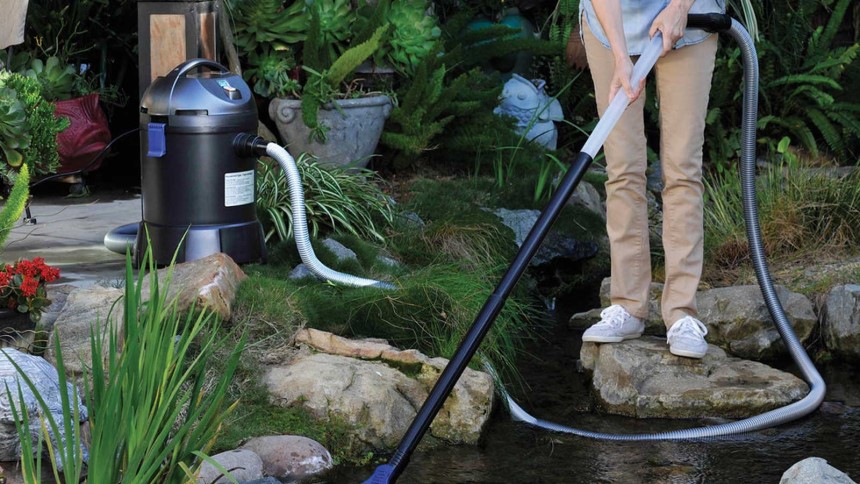
If you don’t have a pond vacuum, try the Pondovac 4. Unlike a typical ShopVac, the Pondovac cleans the pond without sucking out all the water. We found that users love how effectively it pulls out gunk and muck easily while only needing minimal cleaning and maintenance.
We have more detailed reviews on the best pond vacuums and sludge removers if you need a little more help on deciding which one is best for you. At the end of the day, both are great solutions that will keep your pond spotless and your fish happy.
Without a pump and filter constantly churning the pond water, oxygen levels are likely to get really low. It also causes waste and suspended matter to stagnate and cause even more buildup of bacteria.
Such stagnant pond water soon starts to smell due to the production of foul sulfide gases. The lack of oxygen will also start killing plants and animals in the pond, while the stagnant water can attract harmful mosquitoes and other bugs that reproduce in the water.
However, aerating your pond forces the water to circulate and introduces oxygen into it. One of the easiest ways to do this is by installing one of these top pond aerators.
An aerator works by forcing air through the water and causing it to rise in bubbles through the water. In the process, the water mixes up and some air dissolves in it, supplying the fish and plants with much-needed oxygen.
There are also alternative ways to aerate your pond water. A small waterfall or fountain serves the same purpose and allows the water to interact with air and absorb more oxygen while mixing up.
For large ponds, however, a sub-surface aerator kit such as the AirMax KoiAir Aeration Kit remains the best solution because it introduces air bubbles from the bottom of your pond upwards. If you have many large fish, the AirMax kit supplies more than enough oxygen and agitates the pond water, thus keeping it pristine and airy.
Although it is technically a filter, a nano media reactor relies on closely packed media through which the pond water is forced to flow. Unlike biological filters which break down organic matter in the water, nano media reactors absorb and hold onto both suspended and dissolved matter including nitrates and ammonia.
A nano media reactor also requires the use of a submersible pump on some other system which forces the pond water to flow through the media reactor. The media itself can be made of carbon (charcoal), BioPellets, or GFO.
If you don’t have a nano media reactor, simple sand, gravel, and rocks are wonderful sources of pond water filtration and help to foster the growth of beneficial decay bacteria.
Pond plants are indispensable to anyone running a natural pond. Since pond management without a filter is all about managing nutrients in the water, plants are the perfect solution because they use up these nutrients and release oxygen into the water.
Submerged plants also greatly reduce the amount of sunlight that filters through the pond water, which kills surface algae and keeps the water clean for longer. Plants in your pond will be in direct competition with algae, but the plants are high-level organisms.
When you have about ⅔ of your pool covered with green aquatic plants, you can almost eliminate algae growth. The plants function as a natural filtration and aeration system that also adds a beautiful aesthetic to your pond.
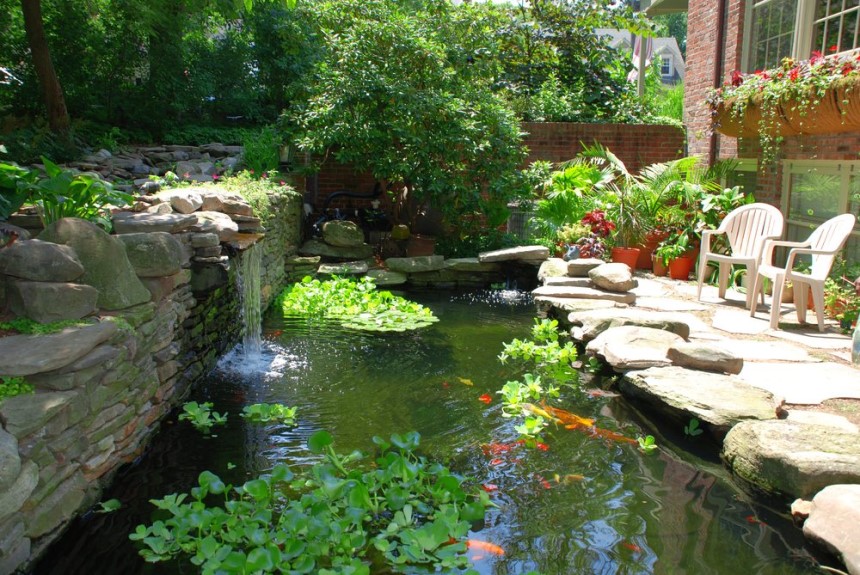 8. Use Beneficial Bacteria And Other Additives
8. Use Beneficial Bacteria And Other AdditivesPond additives are usually biological treatments full of beneficial bacteria. The bacteria gets to work on excessive organic waste, which is great for killing and preventing algae. It can become necessary to recharge your pond with biological additives because such bacteria tend to die off with time.
Unlike pond sludge removers, bacterial additives contain less aggressive strains of bacteria which remain active in your pond for longer. It doesn’t attack live organic matter, which makes it safe for the fish and plants. Pond additives maintain the pond in spotless and healthy condition for the fish and plants to thrive in.
A stand-alone UV sterilizer or clarifier is a powerful device which you can use to recover your pond water when algae and harmful microorganisms start to proliferate. It works by shining UV light through the water as it circulates through the device. UV light kills algae cells, bacteria, yeast, mold, fungi, and more by disrupting their internal cell structure.
UV light is the strongest non-chemical method of sterilizing pond water, but it is indiscriminate and also kills the beneficial bacteria. Once you discontinue the device, you should recharge the pond water with beneficial bacteria by using pond additives. If you have no pond filters, a UV sterilizer could be absolutely essential to maintaining a healthy pond ecosystem.
Pond dye targets the other essential ingredient for algae growth, which is sunlight penetration. By coloring pond water green, blue, or other dark colors, it stops algae blooms and other submerged plants such as elodea, pondweeds, naiads, coontail, among others.
While pond dyes are chemicals, they are food-grade and do not harm any of the plants or fish in the pond. However, they do lead to the death of submerged pond plants which will then decay and use up available dissolved oxygen. It is very popular in golf courses to control algae.
Pond dye itself is safe and doesn’t affect the fish in the pond in any way. It also does not stop emergent water plants such as lilies and duckweed from growing. However, it can become an expensive solution if your pond is not stagnant and has an external source of water.
Learning how to keep pond water clean and clear without a filter has immense benefits for you and the pond’s inhabitants. Called biological or natural filtration, this method is more difficult but incredibly rewarding when done right.
This guide is meant to teach you why and how to maintain pond water clear without a filter, but the actual practice may prove more challenging. The delicate ecological balance that needs to be achieved over time can take up to a few years to perfect, which is simply too much for some people.
The thing to remember, however, is that eco-filtration is all about managing the nutrients in pond water. Excess food, dead plants, fertilizer, and other substances add nutrients to the water, and these have to go somewhere.
With a healthy plant population and a generous supply of beneficial bacteria, you will be on your way to a beautiful, natural, and healthy pond filled with happy fish.
